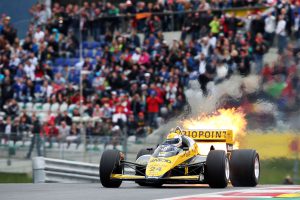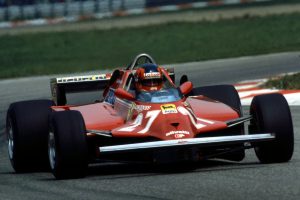Up Next

Formula 1 season-openers are always hotbeds of anticipation. Some then prove to be damp squibs that set the tone for a flat year of predictability.
Others turn the form book inside out and raise the curtain on an epic year – or at least tantalise enough to leave fans full of hope for a wide open season.
Ahead of F1 2021 beginning with the Bahrain Grand Prix, The Race’s writers have been picking their favourite season-opener surprises.
List compiled by Mark Hughes, Edd Straw, Sam Smith, Andrew van de Burgt, Glenn Freeman, Scott Mitchell, Matt Beer and Jack Benyon.
10. Australia 1997: McLaren’s Silver Arrows era starts with a win
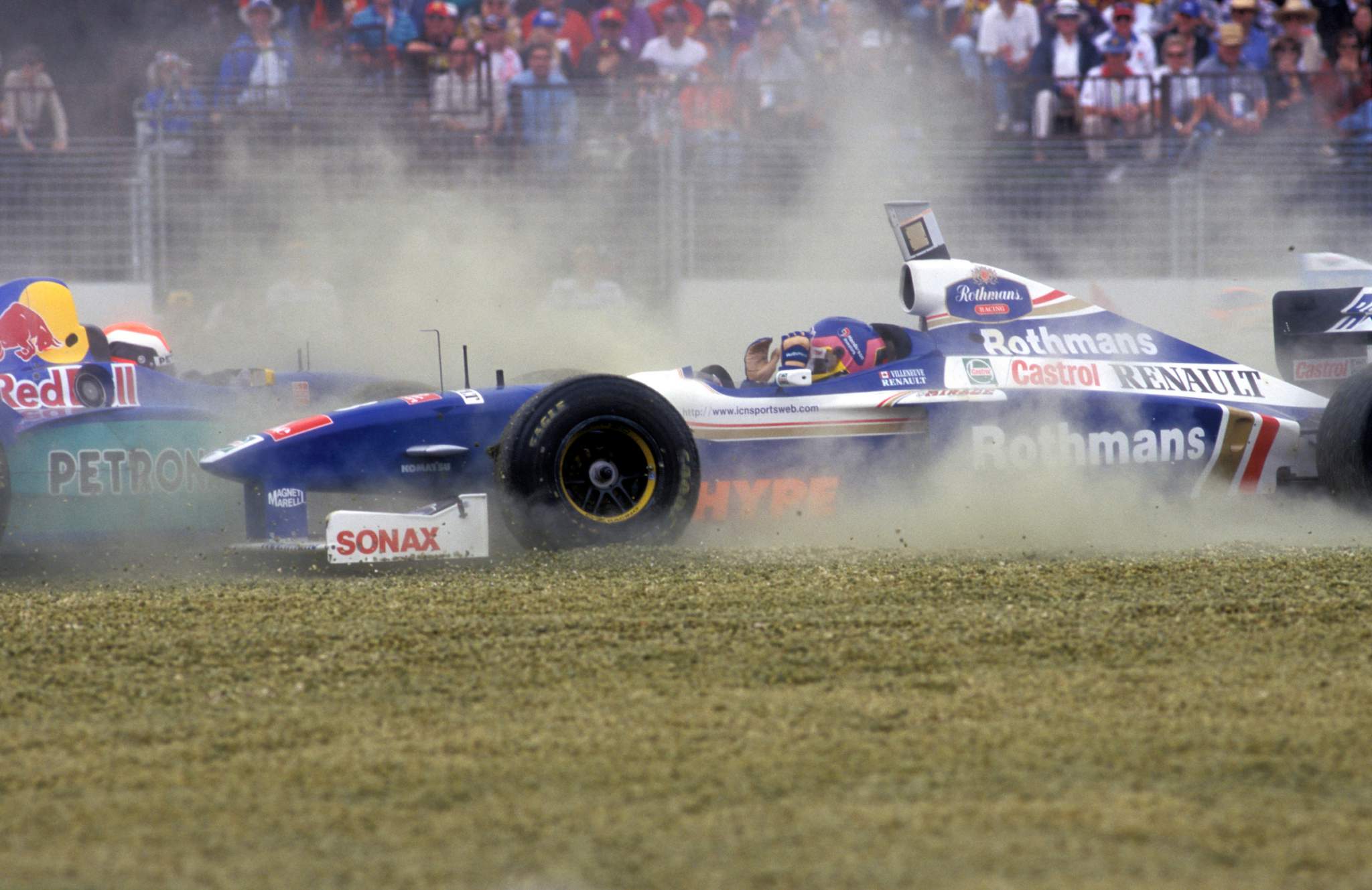
Though McLaren had been edging closer to the front during 1996 and the end of its win drought now looked realistic, few expected the newly silver cars to triumph as early as the 1997 opener.
Especially given that Williams’s Jacques Villeneuve had taken Melbourne pole by a frankly ludicrous 1.7s, and his new team-mate Heinz-Harald Frentzen had pulled away from the field by a second per lap in the first third of the race after Villeneuve had been wiped out at Turn 1 by Eddie Irvine.
But Frentzen’s speed was a deceptive consequence of a two-stop strategy. A slow second stop opened the door for David Coulthard to lead for McLaren, and then a late brake failure ended any hope of Frentzen repassing him.
Lower level surprises on a very odd weekend included just how awful Lola’s new F1 car was on its sole appearance, the extent to which Arrows had hurtled backwards in time for world champion Damon Hill’s arrival (he qualified 5.4s off the pace in 20th and broke down before the start) and Jean Alesi forgetting that his car might need a refuelling stop.
And spare a thought for Johnny Herbert and Sauber. Seventh on the grid and third behind the Williams in the warm-up hinted at a great day, and then he was second for a few yards going into the first corner before being collected by the Irvine/Villeneuve mess.
9. Brazil 1983: Rosberg on fire, no one finishes second
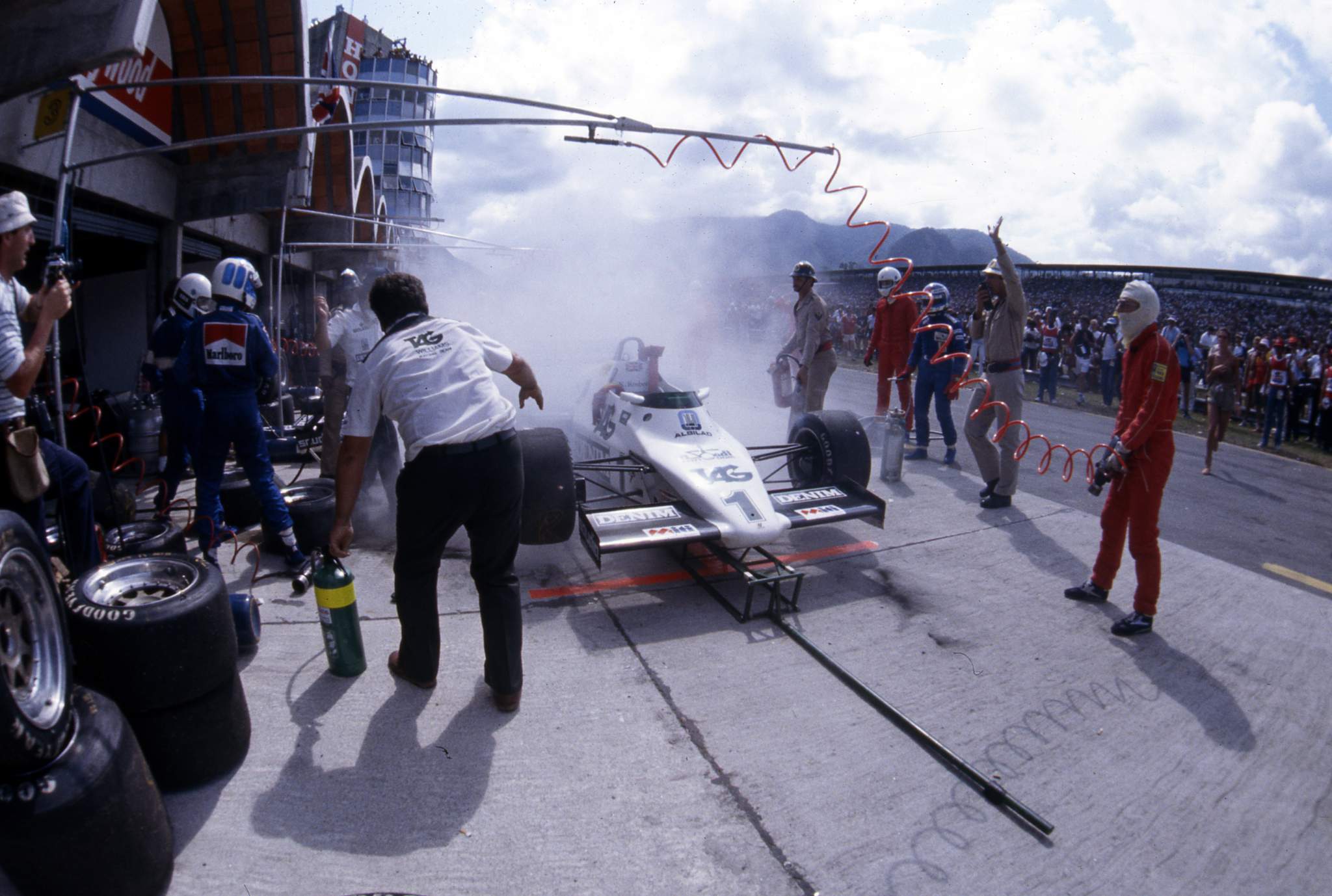
Seldom has a new season felt fresher. Ground effect was gone and flat bottomed cars were introduced, heralding some of the most diverse looking cars ever to compete on the same grid together.
Everything looked different in March 1983. Even the NTSC tinted hue from the cameras via satellite at the Jacarepagua circuit in Rio screamed 1980s, as did the muffled and distorted tones of Murray Walker and James Hunt.
But the real transformation was the cars. They looked nothing like those that had finished the previous season just a few short months beforehand.
The sleek arrow-headed beauty of the Brabham BT52, the outrageously double rear-winged Toleman TG183B and eventually the stumpy rollerskate-like Ferrari 126C2 brought a whole new world into living rooms around the world.
The reality was that the majority of the cars that day were either evolutions of or modified specs of 1982 cars. And the regs may have been new but surely it would be a turbo walkover in the searing heat of Rio?
Not so. Keke Rosberg, dazzlingly fast in a converted Cosworth-powered Williams FW08, took a sensational pole and led until Nelson Piquet’s BT52 came alive.
The fight was still on when Williams took a leaf from Brabham’s 1982 tactics book and Rosberg brought his half-filled car in for a quick fuel top up at half-distance.
Whoosh! The first fuel fire captured in F1 history left Rosberg briefly alight before a gesticulating Patrick Head thrust his driver back into the frying pan.
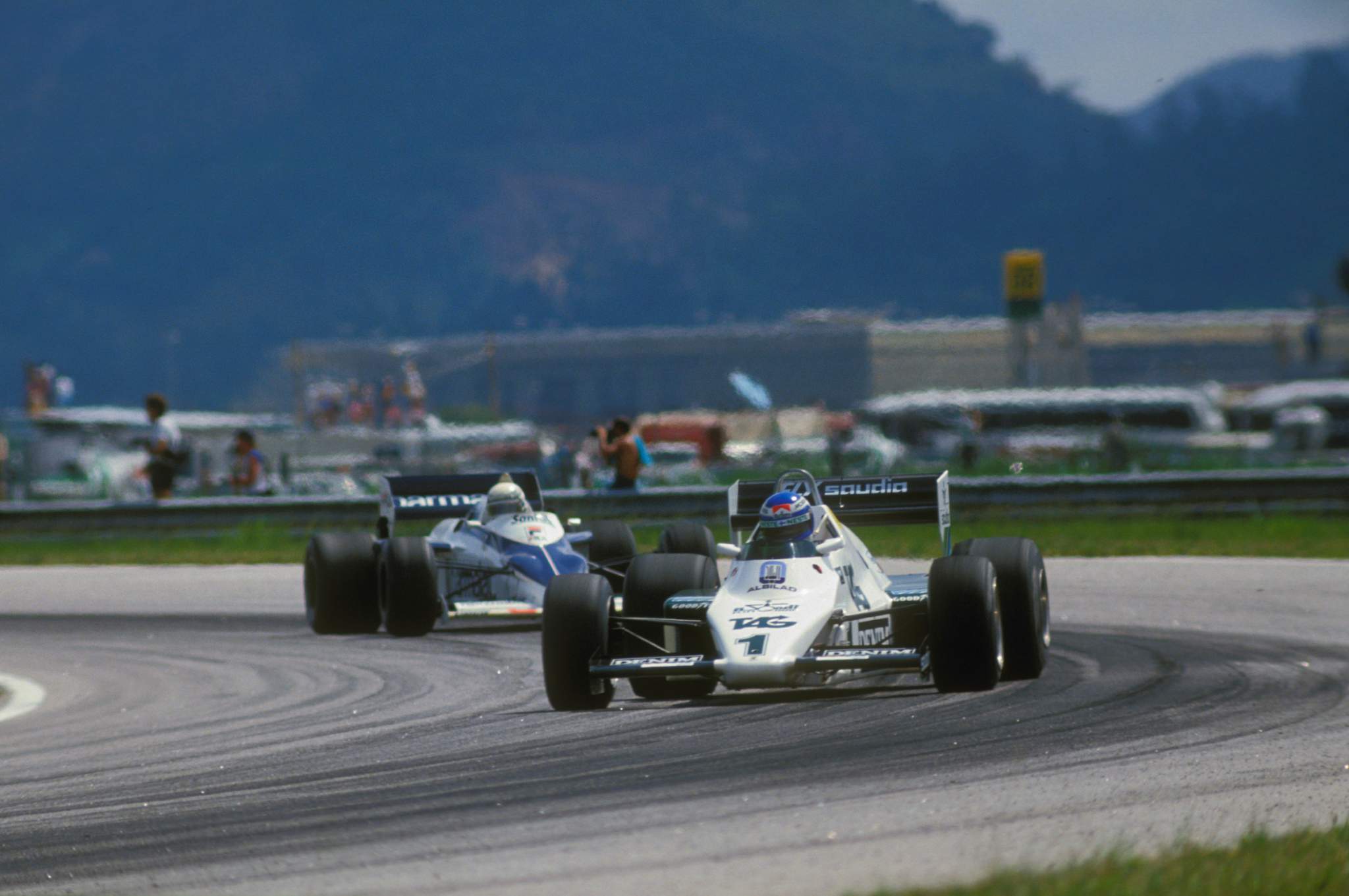
A champion’s drive followed as the Finn clawed his way back from a lapped ninth to second behind Piquet’s Brabham-BMW in one of his best ever F1 drives.
It was all for nothing though, as Rosberg was excluded post-race for receiving – of all things – a push start in the pits post-conflagration.
The decision created one of the great statistical anomalies of F1 in that the order was not shuffled up and therefore no one officially finished second in the 1983 Brazilian Grand Prix!
8. Australia 2002: A wild start sets up Minardi’s glory day
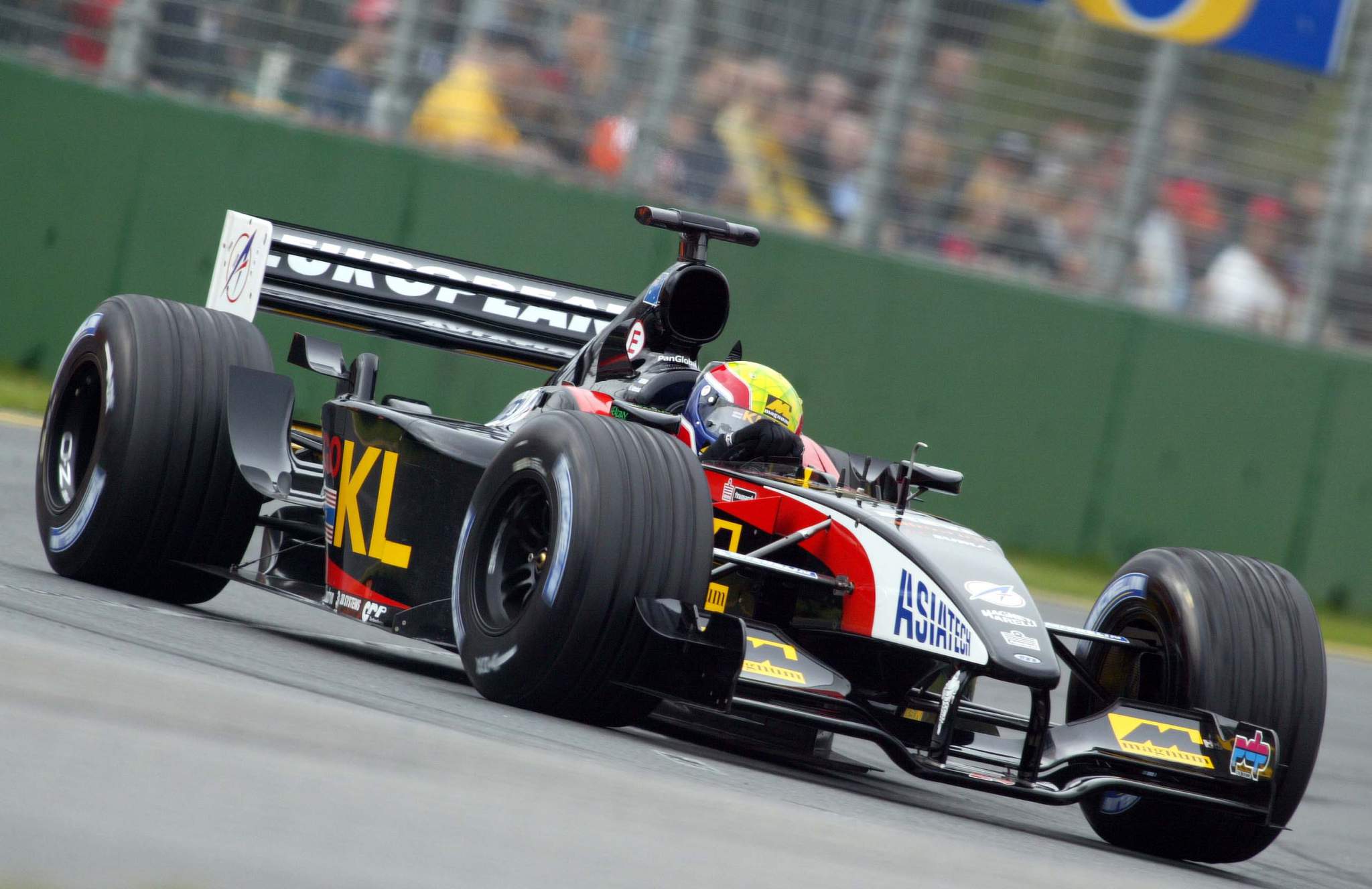
Melbourne 2002 had a bit of everything, Ferrari turning up with last year’s car, a crash wiping out almost half the field at the start and a fairytale drive for an underdog points scorer.
Rubens Barrichello started on pole for Ferrari after wet qualifying, but by the time he reached the first corner the fast starting Ralf Schumacher’s Williams was literally flying over him. Eight cars were wiped out in the chaos that followed.
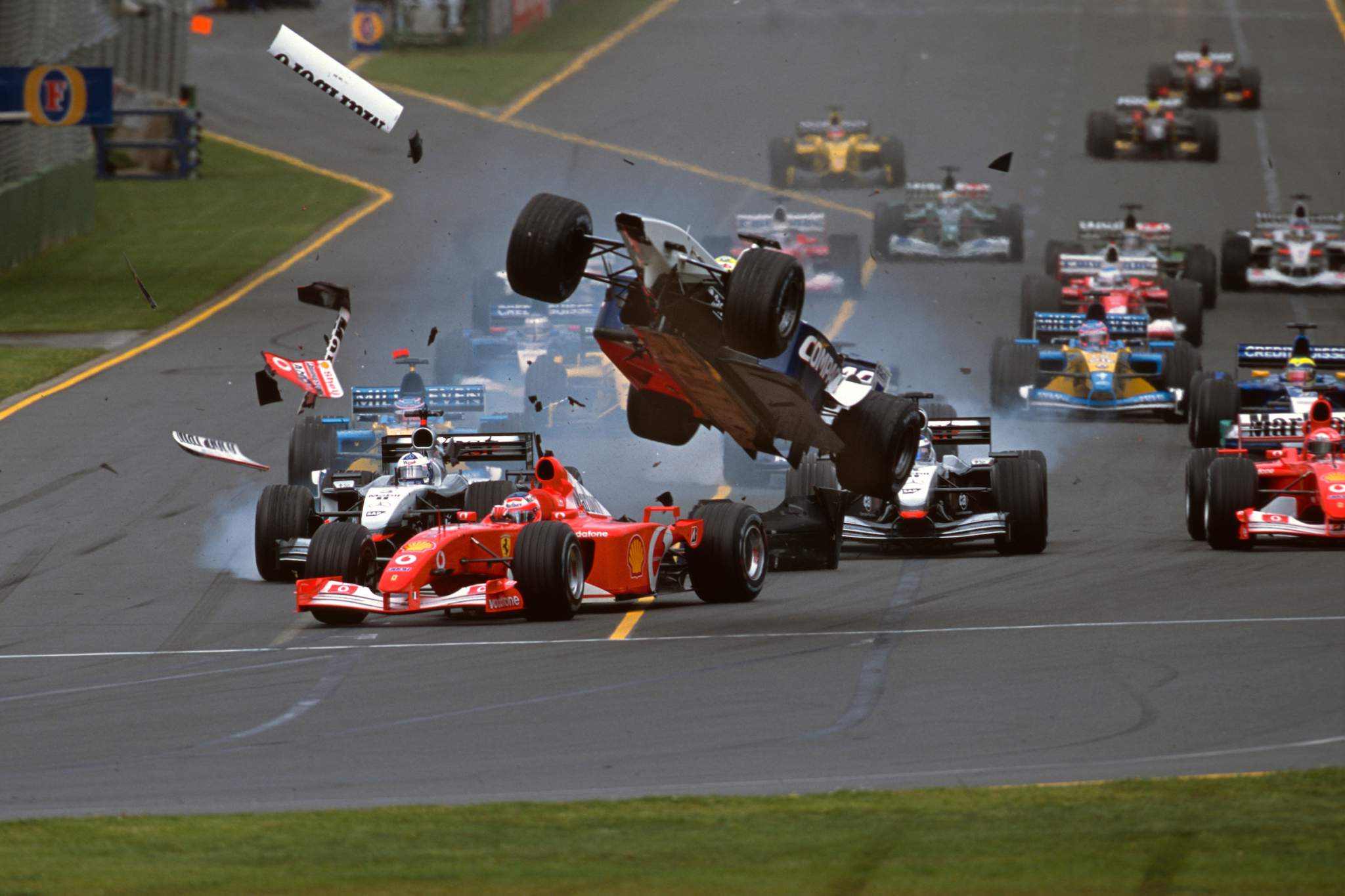
Barrichello called it “silly” and said “if I wasn’t there he wouldn’t have made the corner”, while Schumacher argued “Rubens changed the direction twice too much”.
Reigning champion Michael Schumacher dropped to fourth behind Coulthard, Jarno Trulli and Juan Pablo Montoya as he dodged the mess, but would ultimately fight through to take the win once his Bridgestones were up to temperature.
The real story was Minardi and its rookie signing Mark Webber, making his F1 debut at home.
Only on a three-race contract at this point, Webber had a relatively uneventful race but took advantage of the opportunities in front of him – starting by leaping from 18th to eighth in the lap one mess.
Despite a fuel flap which was stuck closed in his pitstop and a particularly combative Mika Salo trying to fight past in Toyota’s first F1 race (Salo eventually spun in his efforts), Webber brought home the car for fifth place. It was Minardi’s best result in eight years at Webber and team boss Paul Stoddart’s home race, and an achievement so impressive the race organisers encouraged a protocol breach to let them celebrate on the podium.
7. South Africa 1982: Prost wins from a lap down
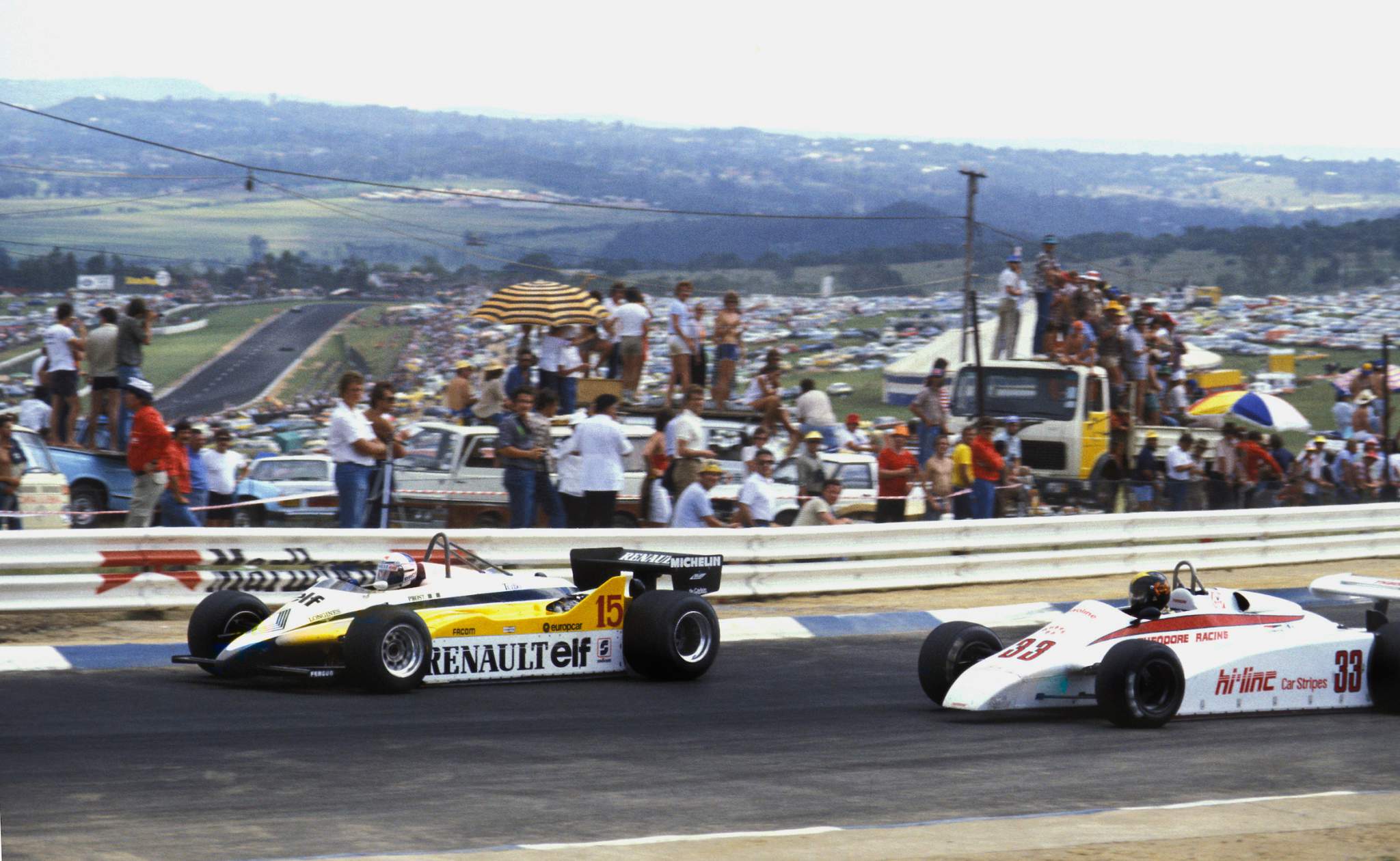
The 1982 season-opening South African Grand Prix is usually only remembered for the drivers’ strike at the peak of the FISA-FOCA war.
But it should be remembered for one of the most remarkable recovery drives in world championship history by Alain Prost.
Given the Renault turbo’s progress during 1981, a Prost win at Kyalami was not a surprise. The manner of it certainly was.
After 40 laps, Prost had an 11-second lead over Renault team-mate Rene Arnoux. Then, he picked up a puncture and crawled back to the pits on a shredded left-rear Michelin.
By the time he rejoined after a lengthy pitstop, he was down in eighth place and a whole lap behind Arnoux. With fresh tyres, he soon overtook the Tyrrell of Michele Alboreto then unlapped himself on Arnoux on lap 46.
Prost’s next targets were the two McLarens of Niki Lauda and John Watson, who he jumped on laps 50 and 54 respectively. Next up were the two Williams drivers, Rosberg and Carlos Reutemann, who he dealt with by the end of lap 61.
He then overtook the misfiring Ferrari of Didier Pironi to take second with 15 laps to go.
By this point, Arnoux was only 18 seconds up the road and struggling for grip.
Prost needed only six laps to catch and pass his team-mate for the lead. It took him just 27 laps to recover from being a lap down to take a famous victory.
6. Australia 2003: Ferrari’s steamroller goes off course
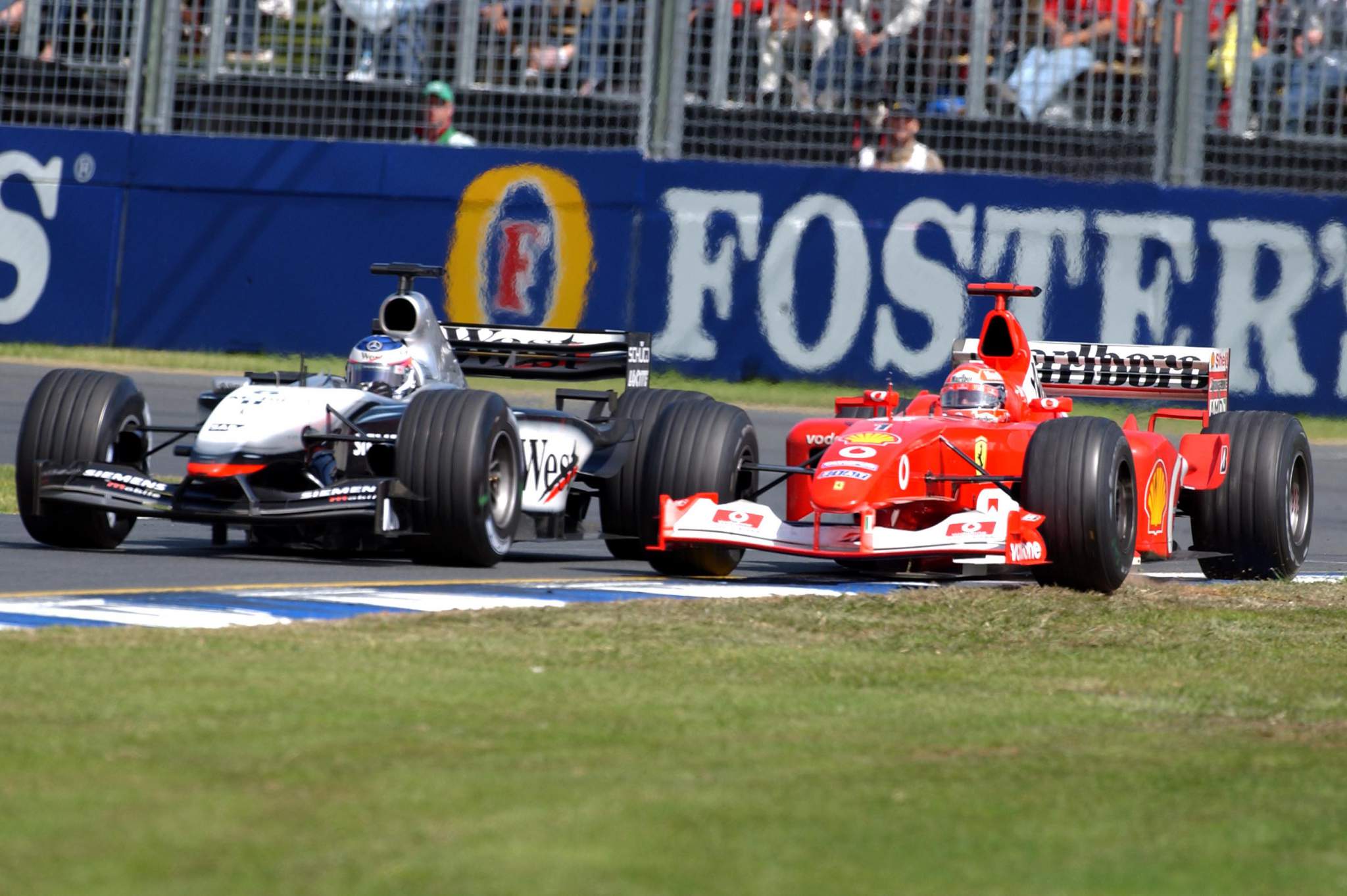
The 2003 Australian Grand Prix carried a huge weight of expectation. Major rule changes were introduced following a year of crushing Ferrari dominance in 2002, and it was vital that the new era got off to a good start, and ideally with something other than a Ferrari walkover.
“You complain so much that something had to be done, so now you have to live with the result,” beamed Michael Schumacher after Ferrari locked out the front row of the grid under the new one-shot qualifying format.
But F1 got what it needed on race day. Ferrari’s race started to unravel before the lights went out when Barrichello lurched forward prior to the start, and he didn’t even get around to serving his penalty before he’d spun into the barriers in damp conditions.
Ferrari then took a surprisingly long time to switch race leader Schumacher to slicks when the track dried, and a slow pitstop left him buried down the order.
Schumacher’s comeback drive hit trouble when he tried to pass Kimi Raikkonen on the outside of the first corner and was forced onto the grass. A pitlane speeding penalty then took Raikkonen out of the equation, but by that point Schumacher’s car was losing part of its bargeboard assembly.
The race for the win became a battle between Montoya and Coulthard, and it was decided in favour of the Scot’s McLaren when Montoya spun his Williams out of the lead at the first corner.
It set the tone for a great season. Schumacher finished fourth, tucked up behind Montoya and Raikkonen, the two men who would be his biggest championship challengers all year.
5. Australia 1996: Villeneuve!
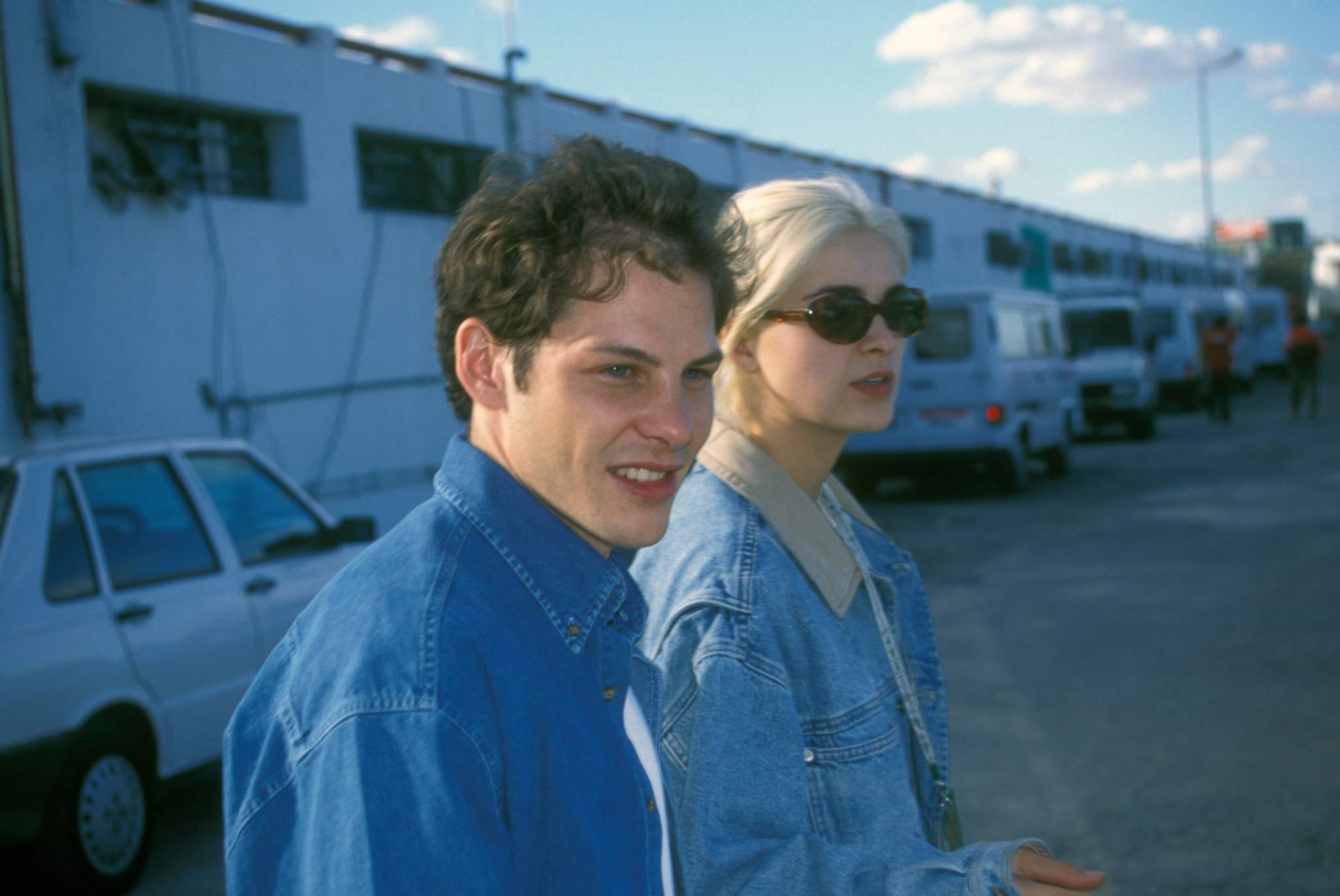
A Williams 1-2 in the mid-1990s might not look like a shock now, but there were multiple ‘F1 turned upside down’ elements to Melbourne’s first world championship GP – and not just Martin Brundle literally putting his Jordan upside down on lap one.
Qualifying was startling enough on three fronts. Despite having little running during Ferrari’s messy winter, its surprise new number two signing Irvine outqualified its big-money hire Michael Schumacher – a renowned team-mate destroyer at previous home Benetton – at the first attempt to take third on the grid. Irvine would be the Ferrari driver on the podium next day too after brake problems for Schumacher, who’d swiftly asserted his superiority in the race.
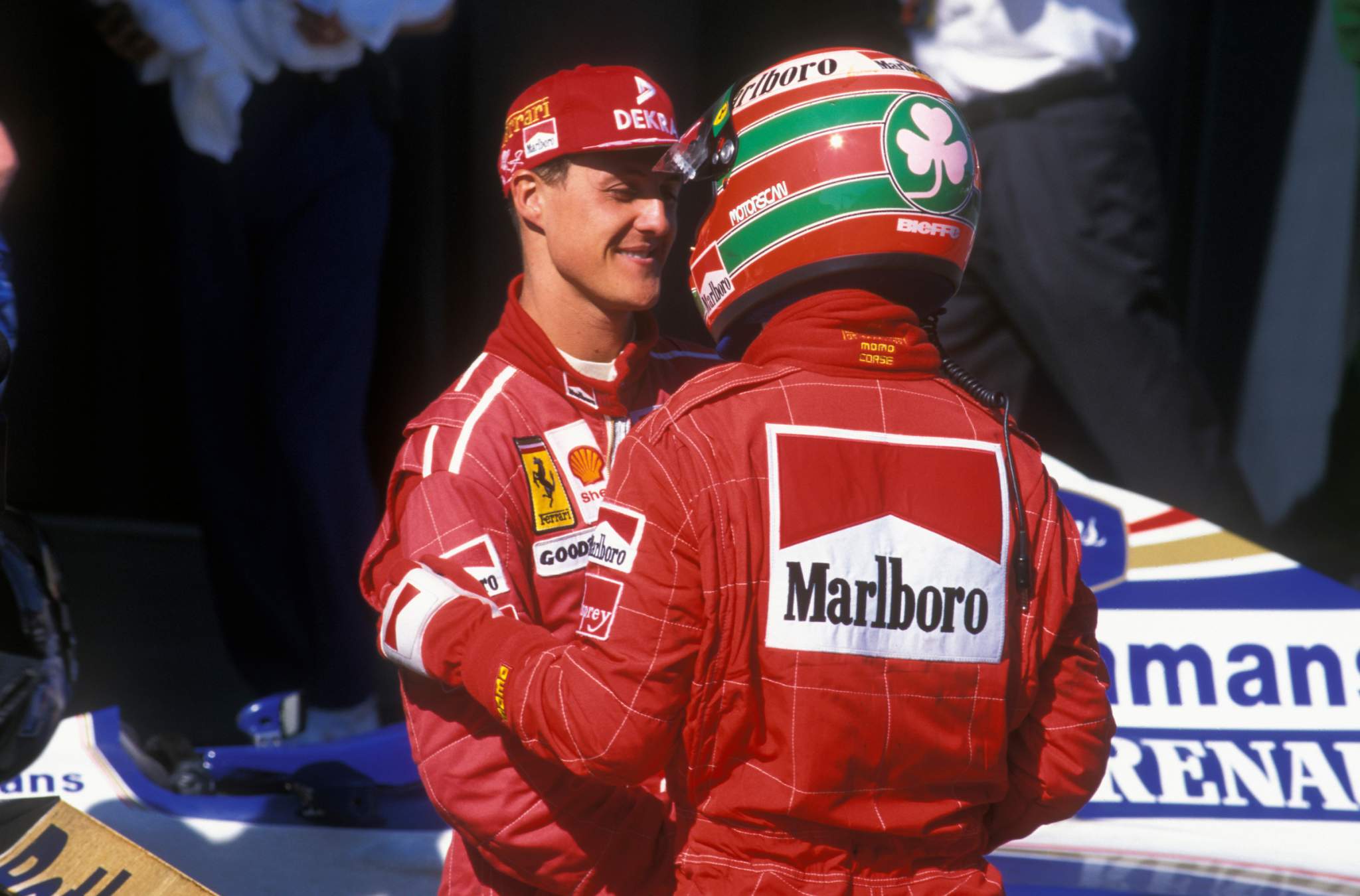
Benetton was a surprise too. Its new Alesi/Gerhard Berger line-up wasn’t expected to live up to double champion Schumacher’s achievements, but the team was still expected to be a title threat. Instead it was 2s off the pace in sixth and seventh, with Berger a distinct fourth in the race and Alesi out early having mangled his car with a lunge at Irvine.
But the biggest shocks came from Williams’s new recruit Jacques Villeneuve. The affection for his legendary father Gilles and his tragically truncated career meant there was a lot of hope surrounding Villeneuve junior as he entered F1 with a CART IndyCar title and Indianapolis 500 triumph under his belt. What he did in Melbourne was beyond anyone’s expectations, though.
After snatching pole from Hill, he led the majority of the race – even repassing his team-mate with a brilliantly judged dummy, squeeze, switchback and round-the-outside move at the second chicane after being jumped in the pitstops.
Villeneuve also stayed ahead when he slewed sideways over the kerbs and grass at the first corner, gathering it up and then fending Hill off confidently. But an oil leak ultimately forced him to slow and accept second place.
It all hinted at an extraordinary F1 career for Villeneuve.
And might it have been a win but for the red flag for Brundle’s crash? Hill had lurched sideways through Turns 1/2 at the original start and been passed by both Ferraris. If Villeneuve had made a big enough break while Hill was caught up there, maybe he wouldn’t have ever come under the pressure that led to his mistake.
4. Brazil 1989: Fragile radical Ferrari holds together
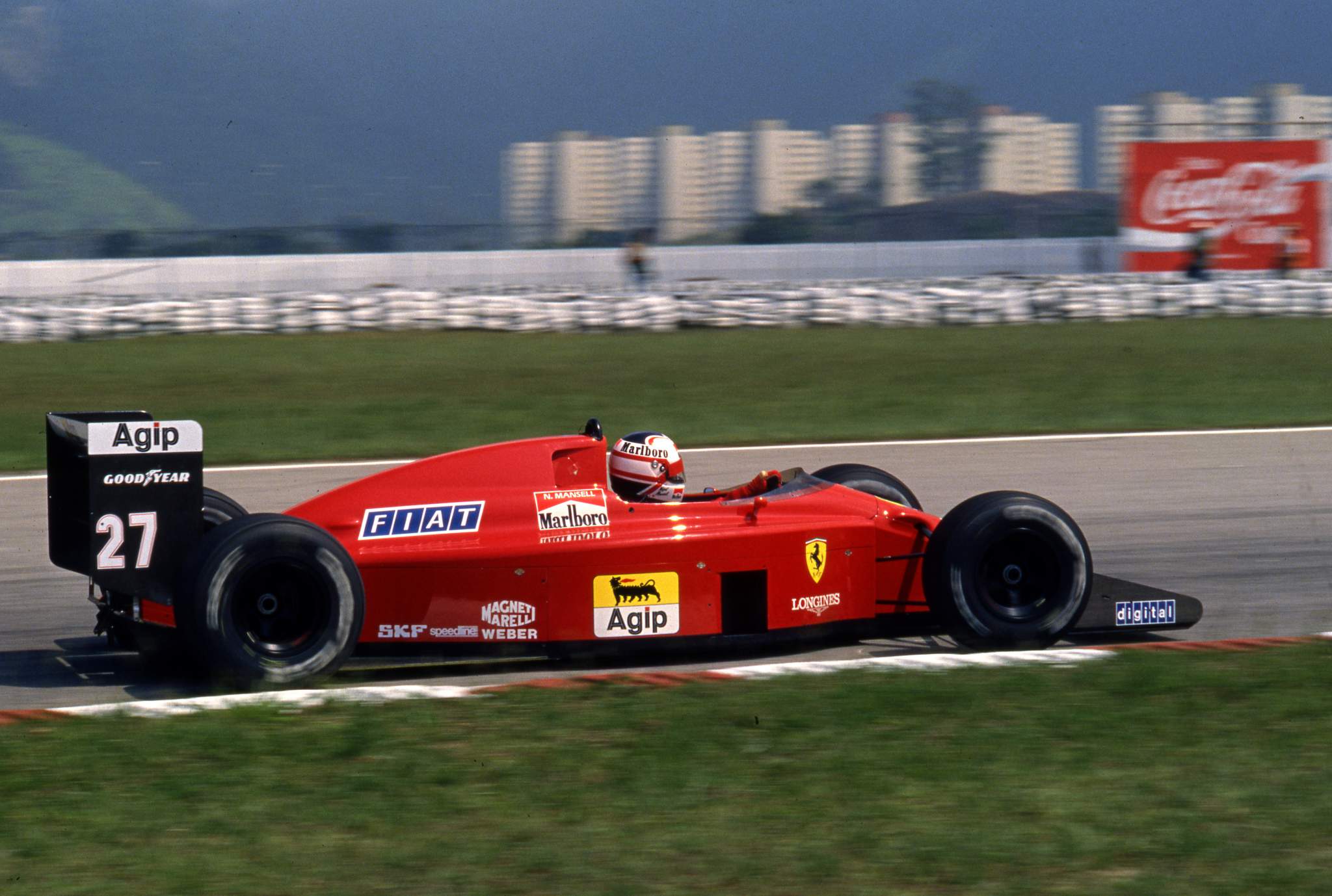
Nigel Mansell didn’t have high hopes for his Ferrari debut in the 1989 Brazilian Grand Prix.
The Ferrari 640 was reasonably quick and he’d qualified sixth with team-mate Berger third. But the car was horrendously unreliable, particularly the innovative new semi-automatic gearbox.
Mansell even had a flight booked that required a sharp exit from the circuit given the high probability that he’d be out of the race long before the chequered flag.
What followed is the stuff of legend, the birth of Mansell as the tifosi’s beloved Il Leone.
The race started coming to Mansell on the first lap, and he climbed to third in the early stages after Berger and Ayrton Senna clashed.
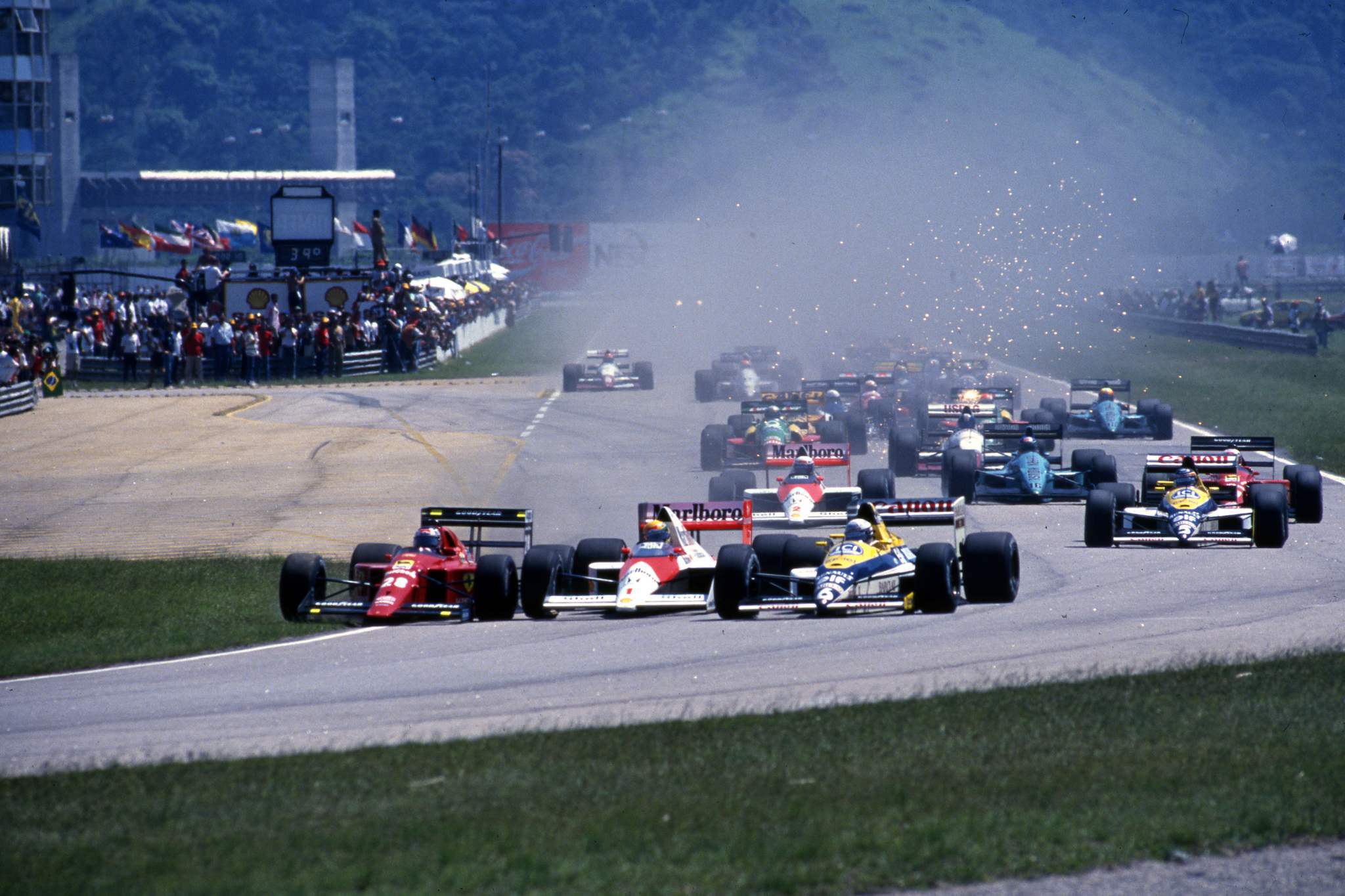
He then picked off Williams pairing Thierry Boutsen and Riccardo Patrese to lead by the end of lap 16.
But it wasn’t quite that simple. As Mansell was two stopping, he had work to do, repassing Patrese after making his first pitstop then, after the famous five-wheel pitstop when he also changed the steering wheel amid a gear selection worry, he had to pass the ailing Alain Prost’s McLaren for the lead.
Mansell was equal to every challenge, and so was his gearbox, leading to a legendary victory in a car that even its driver expected to fail early, and following a year in which McLaren had won 15 out of 16 races.
He wasn’t the only surprise that day. Herbert, making his F1 debut having suffered serious leg injuries in an F3000 crash the previous summer, somehow not only made the finish in his Benetton but finished an astonishing fourth behind Mauricio Gugelmin’s March.
3. Argentina 1979: Ligier out of nowhere
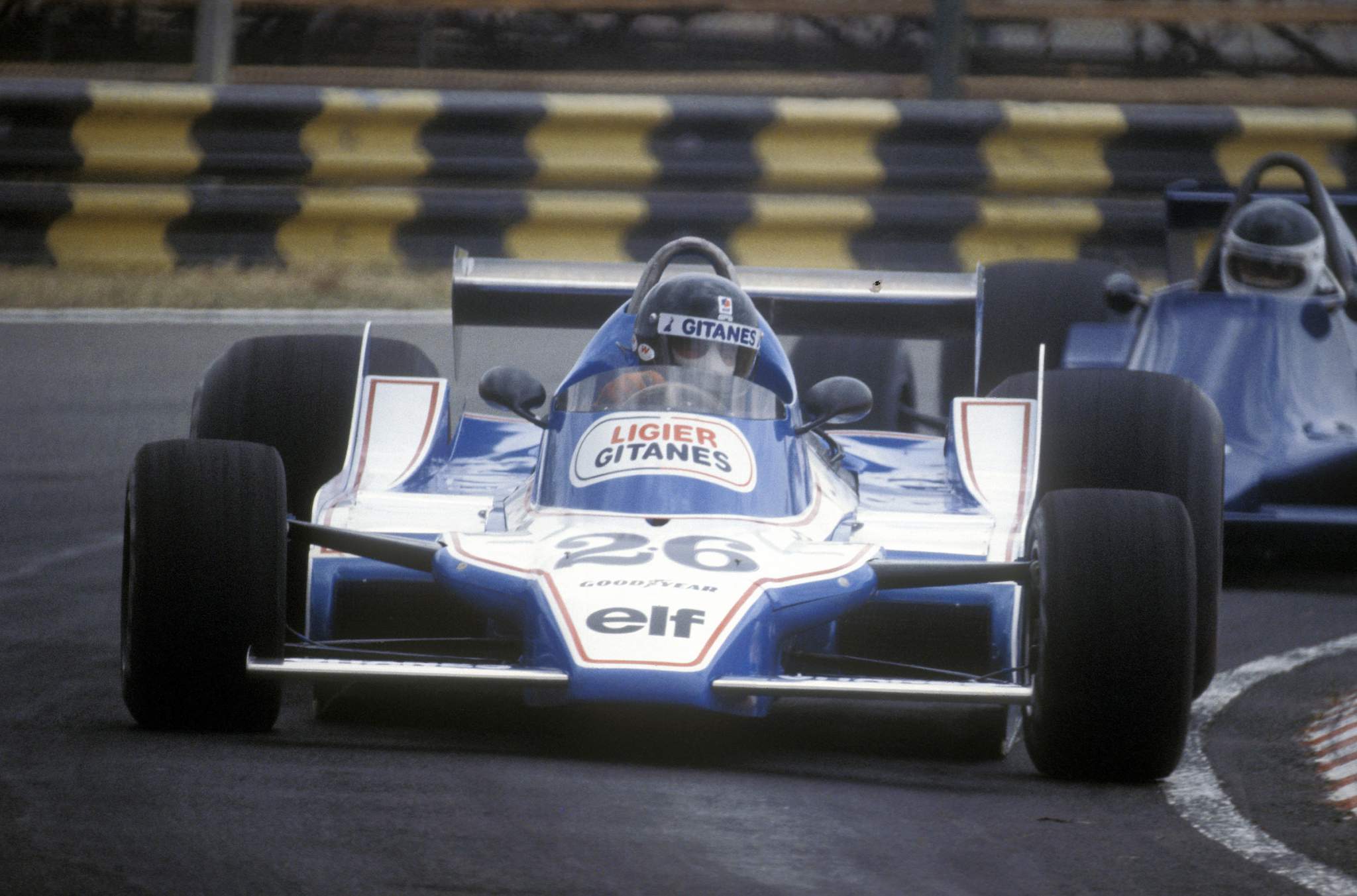
The opening two races of 1979 in Argentina and Brazil represented an extraordinary shake-up in the F1 formbook.
Ligier locked out the front row of both races with Jacques Laffite – who’d won only once before, two years earlier – taking victory at both venues, pushed hard by team-mate Patrick Depailler at Interlagos.
The beautiful French Ligiers, albeit now with Cosworth DFVs rather than their traditional Matra V12s, were suddenly the chased rather than the chasers they’d been since entering F1 in ’76.
They’d picked up the ground effect ball instigated by Lotus and ran away and hid.
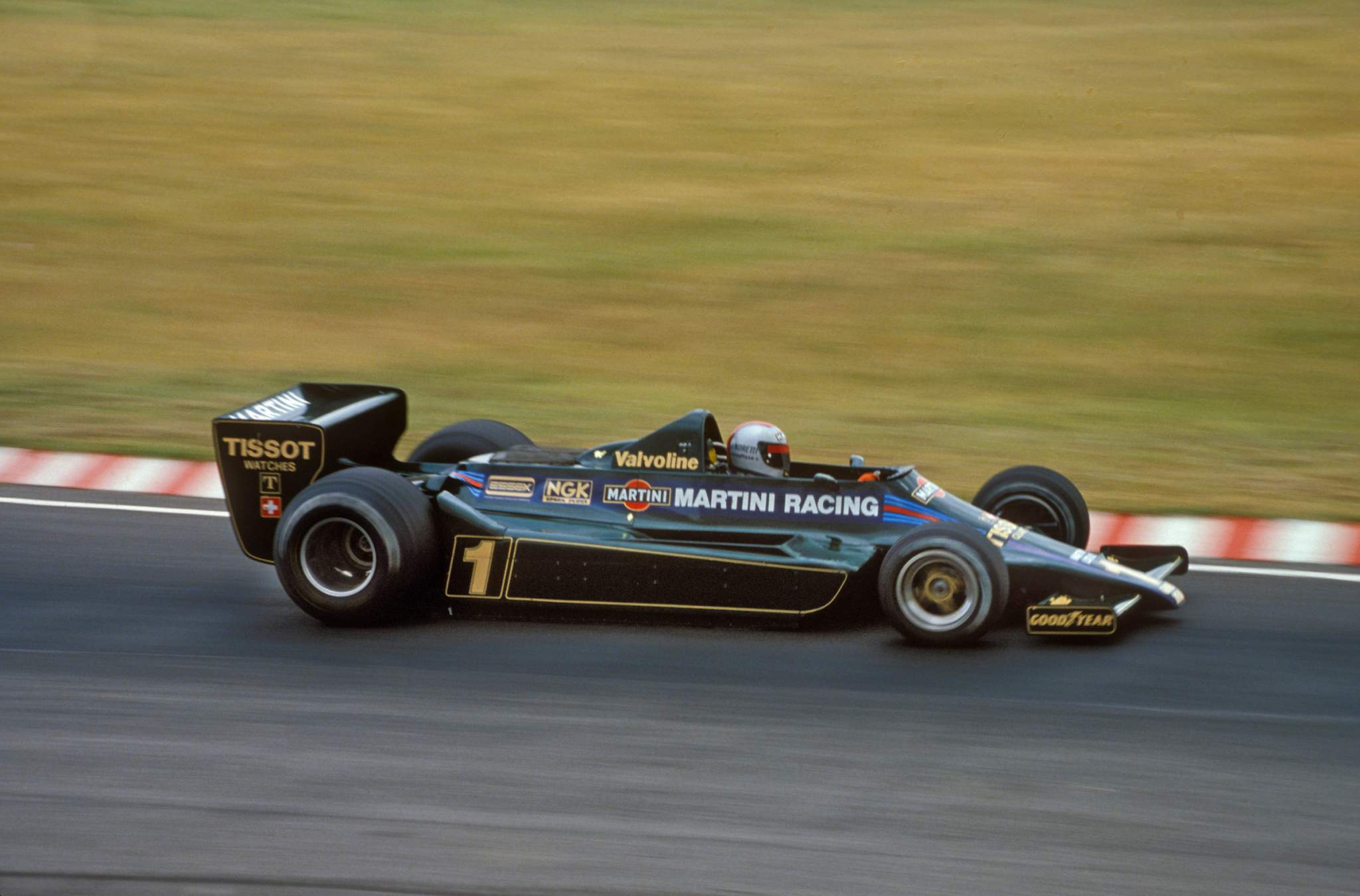
The 1978-dominant Lotuses – here in gorgeous new green Martini livery – were left far behind, with new recruit Reutemann a very distant second in Argentina and third in Brazil.
Tyrrell had built an identikit Lotus 79 in blue, the 009. Unsurprisingly it was competitive with the car which ‘inspired’ it and Jean Pierre Jarier ran an early second.
McLaren’s first attempt at a ground effect car, the M28, looked like no other and would prove to be a disaster. But it flattered to deceive on its debut with John Watson taking a podium, albeit half-a-minute behind the cruising Laffite.
2. USA 1990: Minardi on the front row but Alesi’s the hero

It’s hard to know which of the two things surprised Senna – and the watching world – most.
Was it the fact that a Minardi started on the front row of the grid courtesy of Pierluigi Martini and Pirelli rubber?
Or perhaps the upstart Tyrrell driver Alesi repassing Senna for the lead after being overtaken into Turn 1 on lap 34?
There’s no doubt which one Senna found easier to take, for while he started only fifth with new McLaren team-mate Berger on pole position, the exceptional performance of the Pirelli rubber in qualifying conditions explained the unusual names in the upper reaches of the grid.
But Alesi, who took the lead at the start with a squirming late-braking move, was the one with the staying power.
The Tyrrell driver, in only his ninth grand prix, promptly started to pull away from Berger. Senna, meanwhile, was soon up to second after passing his team-mate and chased down Alesi.
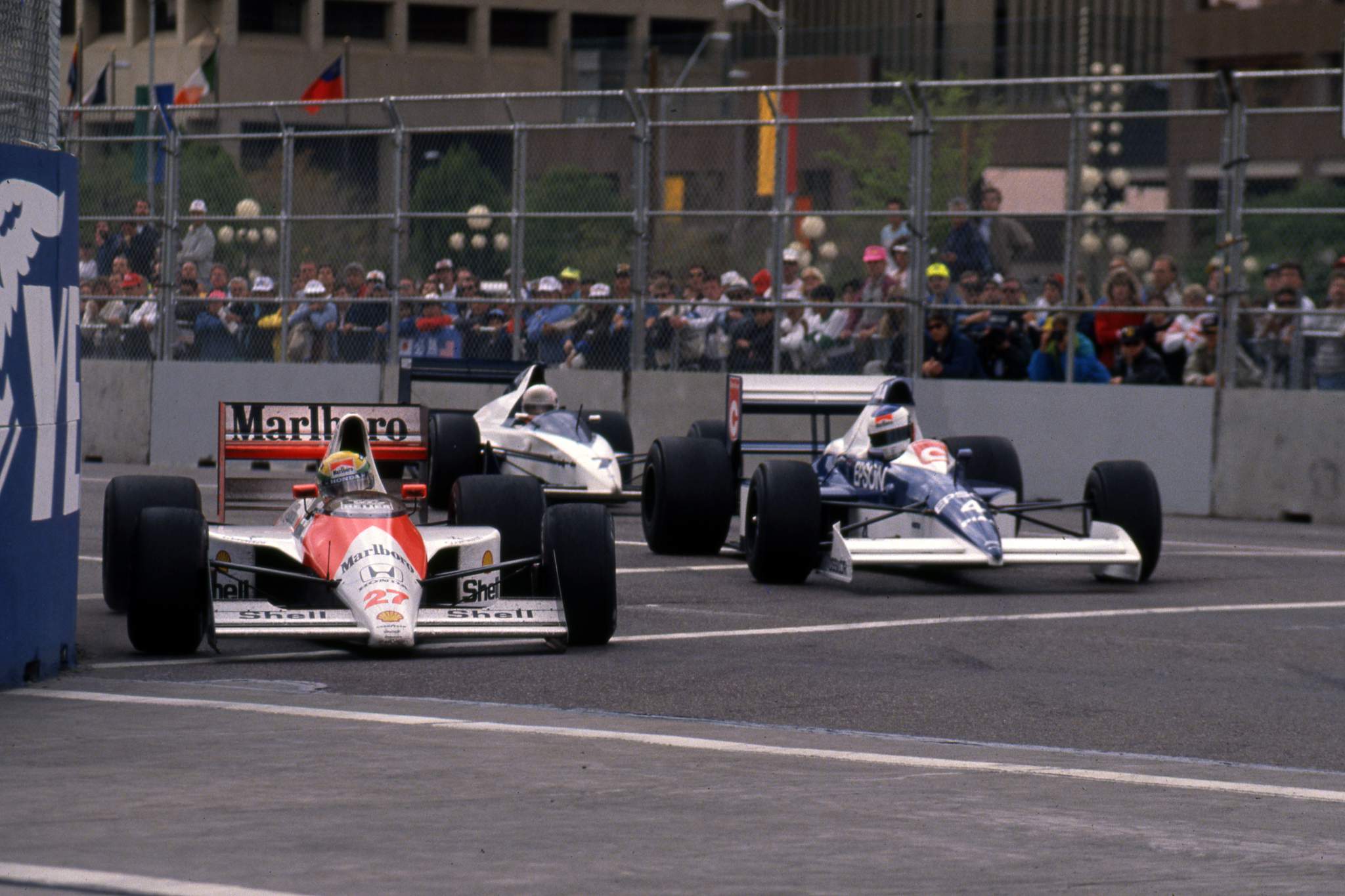
Senna bided his time given he had plenty of laps left, but on lap 34 of 72 dived to the inside at the first corner.
Alesi wasn’t ready for the established order to be restored and into the left-hander at Turn 2 that immediately followed, he squeezed up the inside.
It only delayed the inevitable and next time Senna made the move, he made sure he left no space up the inside into Turn 2. He went on to win by 8.7s from Alesi, who stood on the podium for the first time.
That day, it seemed only a matter of time before Alesi would be racking up wins and world championships.
1. Australia 2009: Brawn’s phoenix fairytale begins
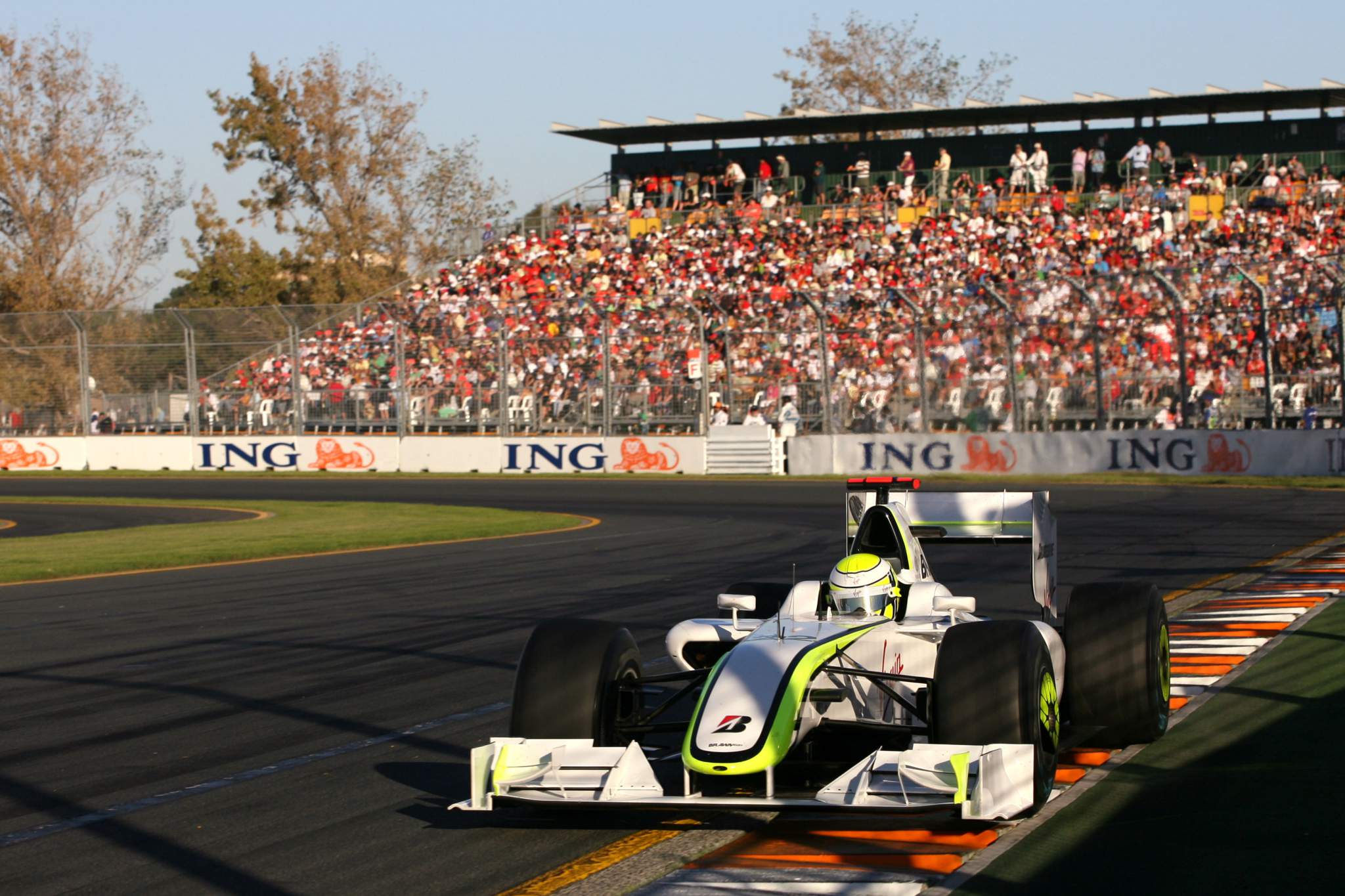
It still seems completely surreal. The Honda team that had been such an abject embarrassment across 2007 and ’08, abandoned by its owner but saved at the last minute by Ross Brawn and resurrected with plain white cars and Mercedes engines, suddenly dominating from the front.
There were multiple logical reasons why that extraordinary transformation happened: the resources Honda had poured into creating what became the Brawn after deciding to write off 2008 and focus totally on the new aerodynamic rules for ’09, its successful deployment of the ‘double diffuser’ rules loophole, and previous top dogs McLaren and Ferrari having thrown so much at their 2008 title fight as it went down to the final corner of the final lap that they were ill-prepared for the new rules.
But there was also a bit of absolute magic about it. Brawn pair Jenson Button and Barrichello – who’d been facing the possible end of their F1 careers as Honda exited when most of the 2009 seats were taken – filled the front row and took a 1-2 in the race, Button fairly serenely from the front, Barrichello fighting back from an awful start and a first-corner tangle.
He inherited second right at the end when Sebastian Vettel’s Red Bull and Robert Kubica’s BMW tangled in Button’s wake, an incident that contributed to Lewis Hamilton, Trulli and Timo Glock converting 18th, 19th and 20th on the grid to third, fourth and fifth at the finish. At least until Hamilton was disqualified from his first race as reigning F1 champion for misleading the stewards. F1 really had become a different world since 2008 ended.




